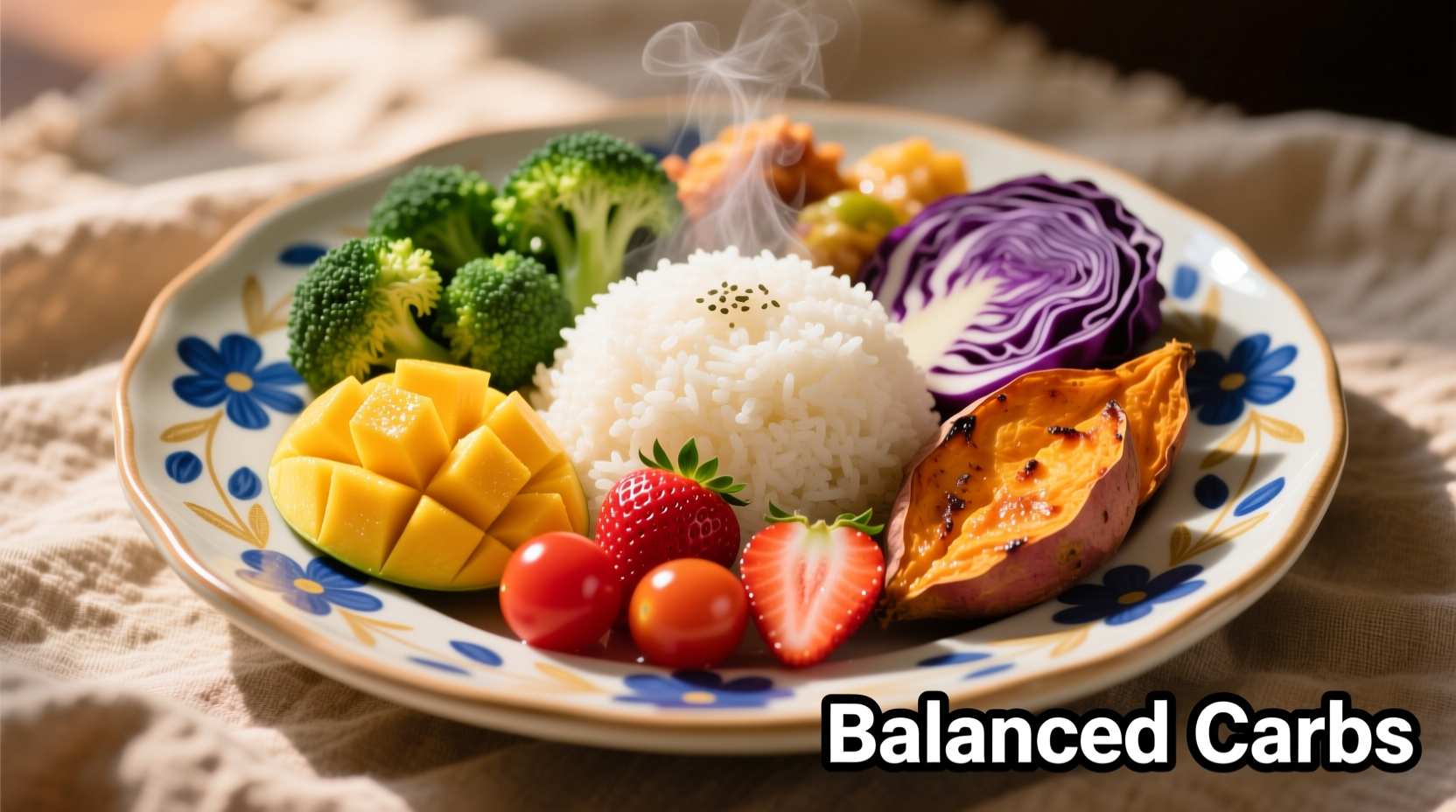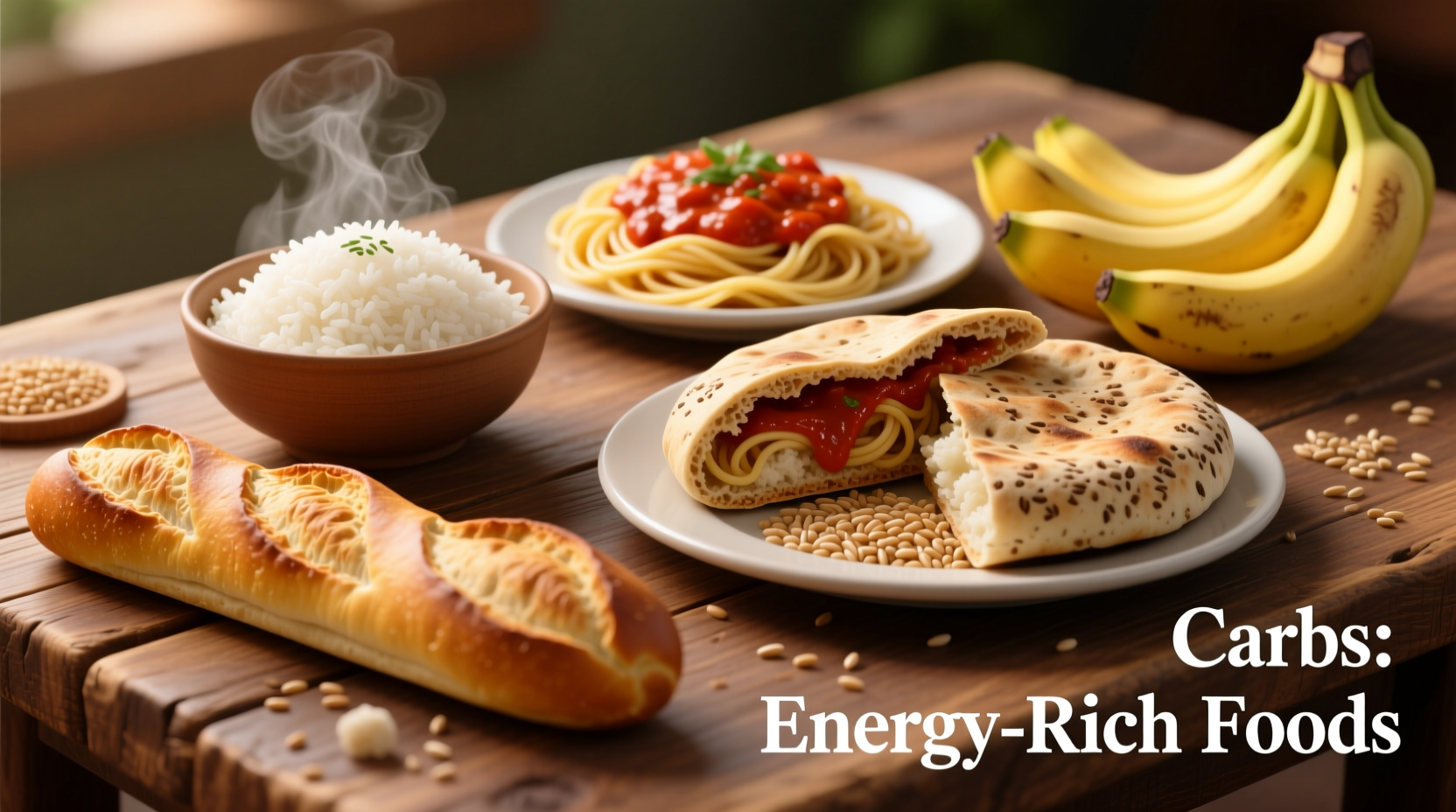Understanding which foods contain carbohydrates is essential whether you're managing diabetes, following a low-carb diet, or simply making informed nutritional choices. This comprehensive guide breaks down carbohydrate content across food categories with practical examples and serving size context—so you can make confident decisions at every meal.
Carbohydrates 101: The Essential Primer
Carbohydrates serve as your body's primary energy source, breaking down into glucose that fuels your brain and muscles. They come in three main forms:
- Simple carbs: Naturally occurring in fruits (fructose) and dairy (lactose), or added as sugars
- Complex carbs: Found in whole grains, legumes, and starchy vegetables with fiber-rich structures
- Fiber: Indigestible plant material that supports gut health (doesn't count toward net carbs)
According to the Dietary Guidelines for Americans, carbohydrates should comprise 45-65% of your daily calories. For a 2,000-calorie diet, that's 225-325 grams of total carbs. But individual needs vary based on activity level, health conditions, and dietary goals.

High-Carb Food Categories (20g+ Per Serving)
These foods deliver significant carbohydrate content per standard serving. Be mindful of portions if monitoring intake:
| Food Category | Typical Serving | Carbs (grams) | Key Considerations |
|---|---|---|---|
| Grains | 1 cup cooked rice | 45g | Whole grains provide more fiber than refined options |
| Legumes | 1/2 cup black beans | 22g | High in protein and fiber—slows carb absorption |
| Starchy Vegetables | 1 medium potato | 37g | Sweet potatoes offer more vitamins than white potatoes |
| Fruits | 1 medium banana | 27g | Berries generally lower in carbs than tropical fruits |
This comparison comes from the USDA FoodData Central database, which provides standardized nutritional information for thousands of foods. Note that preparation methods significantly impact carb content—frying adds carbohydrates through batter, while roasting concentrates natural sugars.
Moderate-Carb Options (5-20g Per Serving)
These foods offer balanced carbohydrate levels suitable for most eating patterns:
- Dairy: 1 cup milk (12g), 6oz Greek yogurt (7g)—choose plain varieties to avoid added sugars
- Non-starchy vegetables: 1 cup cooked carrots (12g), 1 cup cooked spinach (7g)
- Fruit: 1 cup berries (15g), 1 small apple (25g)
The CDC notes that many Americans consume excessive added sugars—nearly 13% of total calories on average. Focus on naturally occurring carbs from whole foods rather than processed items with added sugars.
Low-Carb Choices (Under 5g Per Serving)
These foods contain minimal carbohydrates per typical serving:
- Leafy greens: 2 cups raw spinach (1.4g), 2 cups romaine lettuce (3g)
- Cruciferous vegetables: 1 cup raw broccoli (6g), 1 cup cauliflower (5g)
- Healthy fats: Avocado (2g per 1/4), olives (1g per 10)
- Proteins: Chicken breast (0g), eggs (0.6g per large egg)
When following strict low-carb diets like keto, calculate net carbs (total carbs minus fiber). For example, 1 cup of cooked broccoli has 6g total carbs but only 2g net carbs due to its 4g fiber content.
Hidden Carbohydrates: Common Pitfalls
Many foods contain unexpected carbohydrates that can derail dietary goals:
- Sauces and dressings: 2 tbsp barbecue sauce (16g), 2 tbsp ranch dressing (3g)
- Processed meats: 2 slices honey ham (2g), flavored sausages
- Beverages: 8oz orange juice (26g), sweetened teas and coffees
- 'Healthy' snacks: Granola bars, flavored nut milks
The Academy of Nutrition and Dietetics emphasizes checking ingredient labels for hidden sugars—terms like maltodextrin, dextrose, and high-fructose corn syrup all indicate added carbohydrates.
Practical Carb Management Strategies
Use these evidence-based approaches to manage carbohydrate intake effectively:
- Master portion control: Use measuring cups initially to understand serving sizes
- Read nutrition labels: Focus on 'Total Carbohydrates' and 'Dietary Fiber' lines
- Pair carbs with protein/fat: Slows digestion and prevents blood sugar spikes
- Choose whole food sources: Provides fiber and nutrients missing in refined carbs
- Track your intake: Apps like Cronometer help monitor daily carb consumption
Remember that carbohydrate needs vary by individual. Athletes may require more carbs for performance, while those managing insulin resistance benefit from lower carb approaches. Consult a registered dietitian for personalized guidance based on your health status and goals.
Frequently Asked Questions
Do eggs contain carbohydrates?
No, eggs contain virtually zero carbohydrates. One large egg has approximately 0.6 grams of carbs, which is negligible for most dietary purposes. Eggs are primarily composed of protein and fat, making them an excellent choice for low-carb and ketogenic diets.
How many carbs are in a slice of bread?
A typical slice of white bread contains about 15 grams of carbohydrates, while whole wheat bread has approximately 14 grams. Some low-carb bread alternatives contain 4-8 grams per slice. Always check nutrition labels as carb content varies significantly between brands and types.
Are all carbohydrates bad for you?
No, carbohydrates are not inherently bad. Whole food sources like vegetables, fruits, legumes, and whole grains provide essential nutrients, fiber, and sustained energy. The concern lies with refined carbohydrates and added sugars found in processed foods, which can contribute to health issues when consumed in excess.
What vegetables are lowest in carbohydrates?
The lowest-carb vegetables include leafy greens like spinach (1.1g per cup raw), kale (1.4g per cup raw), and lettuce (1g per 2 cups). Other excellent low-carb options are zucchini (3g per cup), cucumbers (4g per cup), and celery (1.5g per cup). These vegetables provide essential nutrients with minimal impact on blood sugar.
Does cooking affect a food's carbohydrate content?
Cooking can change carbohydrate availability. Boiling starchy foods like potatoes may leach some carbs into water, while roasting concentrates natural sugars. For accurate tracking, use nutritional data for foods prepared as you consume them. The USDA database provides values for both raw and cooked preparations of many foods.











 浙公网安备
33010002000092号
浙公网安备
33010002000092号 浙B2-20120091-4
浙B2-20120091-4